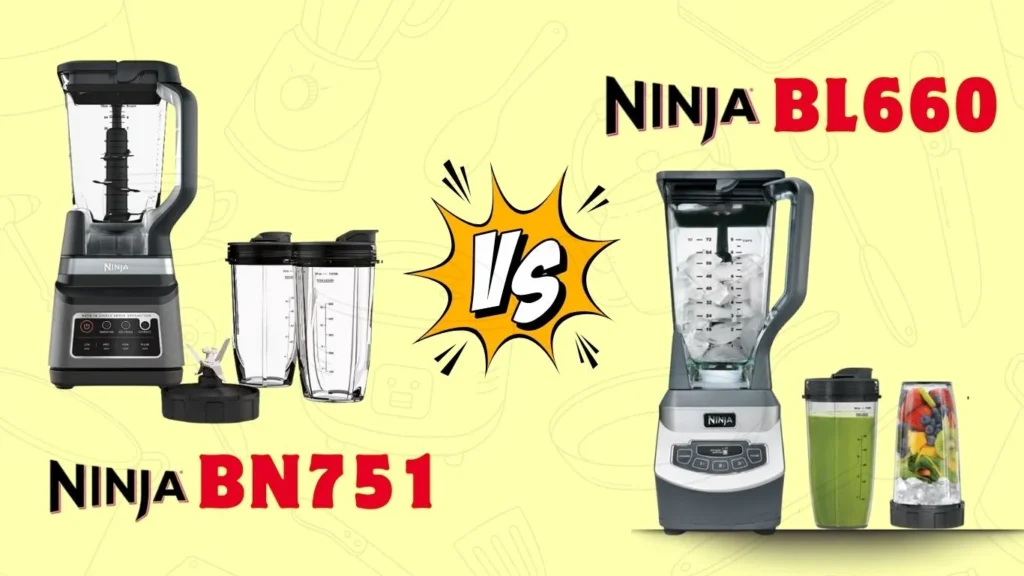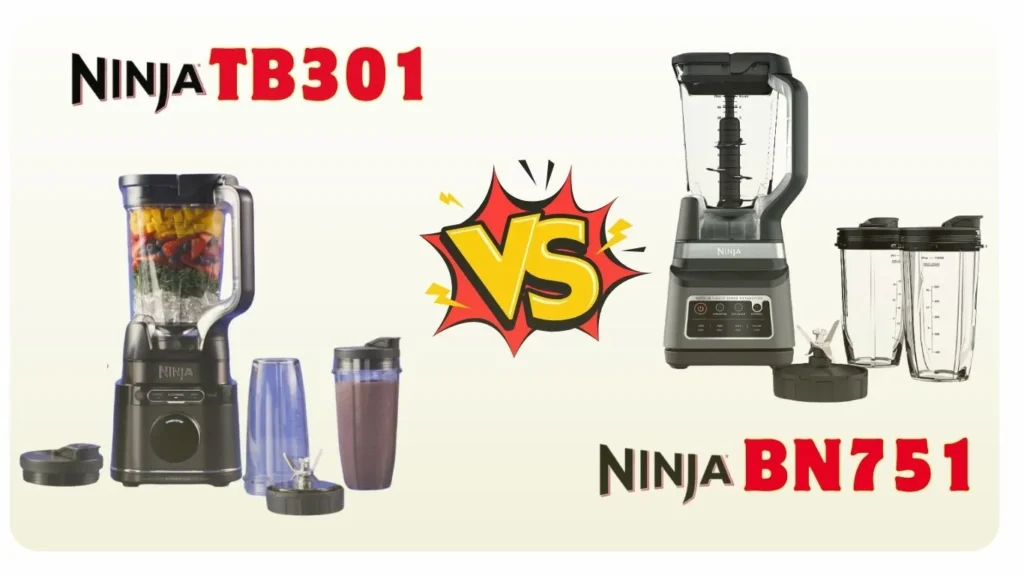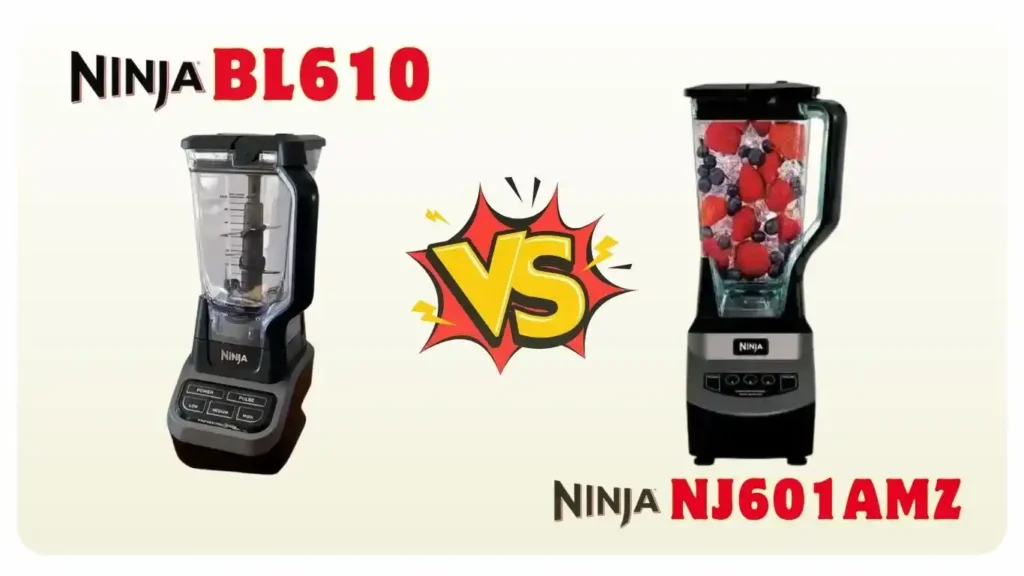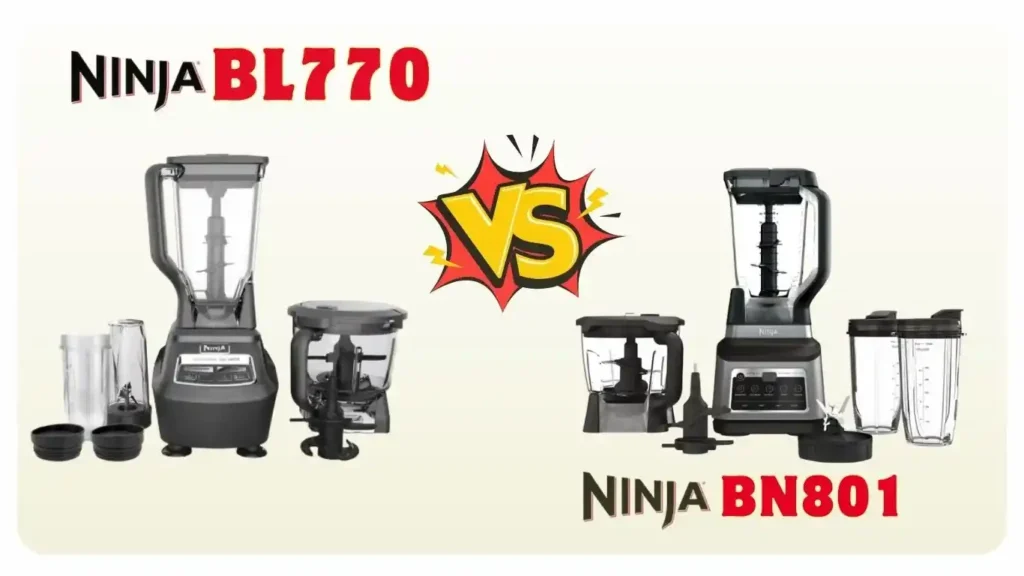When you’re in the kitchen, having the right tools can make all the difference. If you’ve ever wondered about the difference between a hand blender and an immersion blender, you’re not alone.
These two names often get mixed up, but understanding what each really does can transform how you prepare your meals. Whether you want to whip up a creamy soup, blend a smoothie, or mix a sauce without making a mess, knowing which blender suits your needs will save you time and effort.
Keep reading to discover the key features, benefits, and uses of hand blenders and immersion blenders—so you can choose the perfect one for your kitchen.
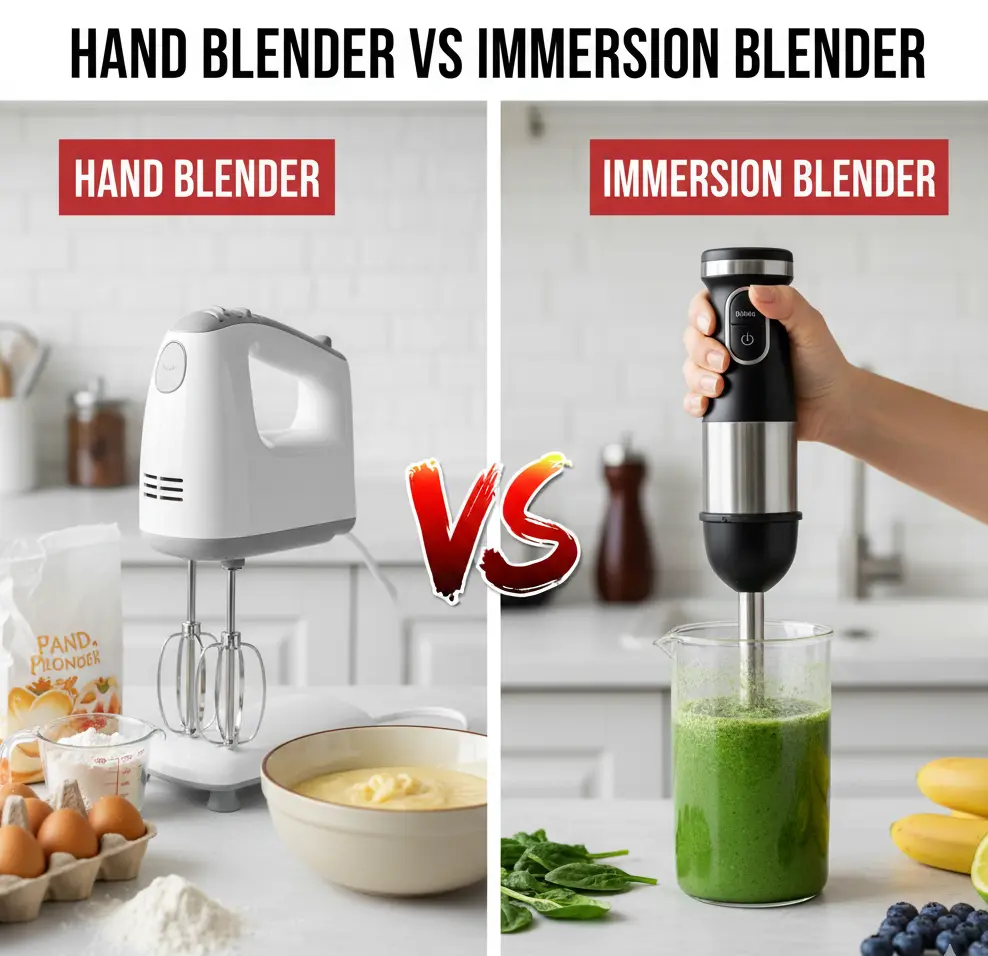
Hand Blender And Immersion Blender Basics
The terms “hand blender” and “immersion blender” often cause confusion. Both names describe a kitchen tool designed for blending directly in pots, bowls, or cups. Understanding their basics helps you choose the right tool for your cooking needs.
This section breaks down the essential facts about hand blenders and immersion blenders. Learn how they are similar, their design features, and their main uses.
Same Tool, Different Names
Hand blender and immersion blender refer to the same device. The names vary by region or brand preference. Both describe a compact blender with a long shaft and blade at the end. This design allows blending inside containers without transferring food.
People use these terms interchangeably. Knowing this prevents confusion when shopping or reading recipes.
Handheld Design Features
These blenders have a handheld design for easy control. A long stick-like shape lets you reach deep into pots and pitchers. The blade guard protects surfaces and keeps splashes minimal.
Most models come with simple controls on the handle. Some include detachable parts for easy cleaning. Their lightweight build reduces hand fatigue during use.
Core Functions And Uses
Hand blenders excel at blending soups, sauces, and smoothies directly in the cooking vessel. They puree ingredients quickly without extra dishes. These blenders also chop soft foods and mix batters.
They are not made for heavy chopping or crushing hard items. Their main strength is blending liquids and soft foods efficiently.
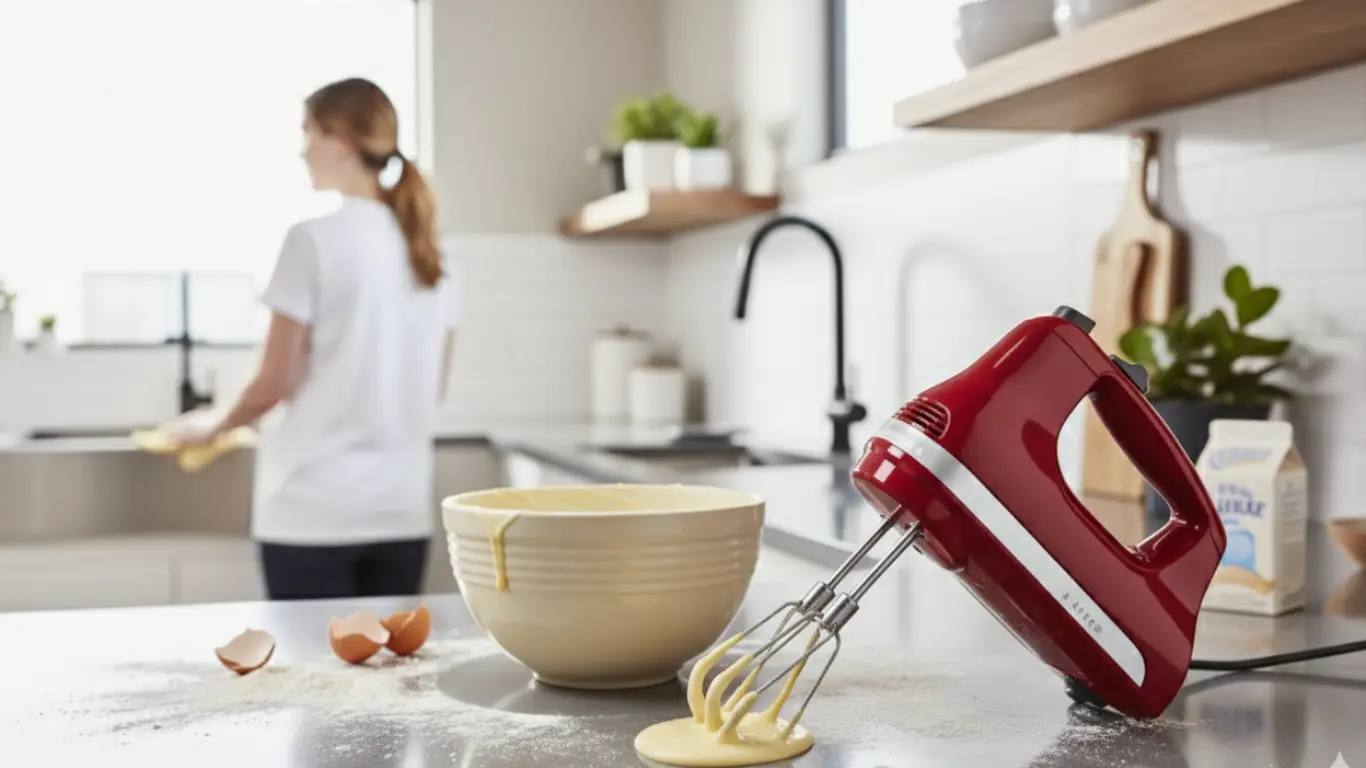
Key Benefits
Understanding the key benefits of hand blenders and immersion blenders helps you choose the best tool for your kitchen. Both offer unique advantages that make cooking faster and easier. Their design focuses on simplicity and efficiency, making them popular among home cooks. Below, explore how these tools add value in different ways.
Versatility In The Kitchen
Both hand and immersion blenders handle many tasks. They can puree soups, blend smoothies, and mix sauces directly in the pot. Some models include attachments for whisking or chopping. This makes them adaptable for various recipes. Their ability to work in different containers adds to their flexibility.
Space And Portability Advantages
These blenders take up little space. Their compact size fits easily in kitchen drawers. They are lightweight and easy to carry. This portability lets you use them anywhere in the kitchen. Perfect for small kitchens or limited storage.
Convenience And Cleanup
Using these blenders reduces the number of dishes. You blend ingredients in the cooking pot or bowl. This means fewer containers to wash. Many parts are dishwasher safe, saving time on cleanup. Their simple design also makes rinsing quick and easy.
Common Applications
Hand blenders and immersion blenders share many uses in the kitchen. Both tools make food preparation quicker and cleaner. Understanding their common applications helps in choosing the right one for specific tasks.
Pureeing Soups And Sauces
Both blenders excel at pureeing hot soups directly in the pot. They create smooth textures without transferring food to another container. Sauces become velvety and lump-free with just a few seconds of blending. The immersion feature allows blending right where cooking happens. This saves time and reduces cleanup.
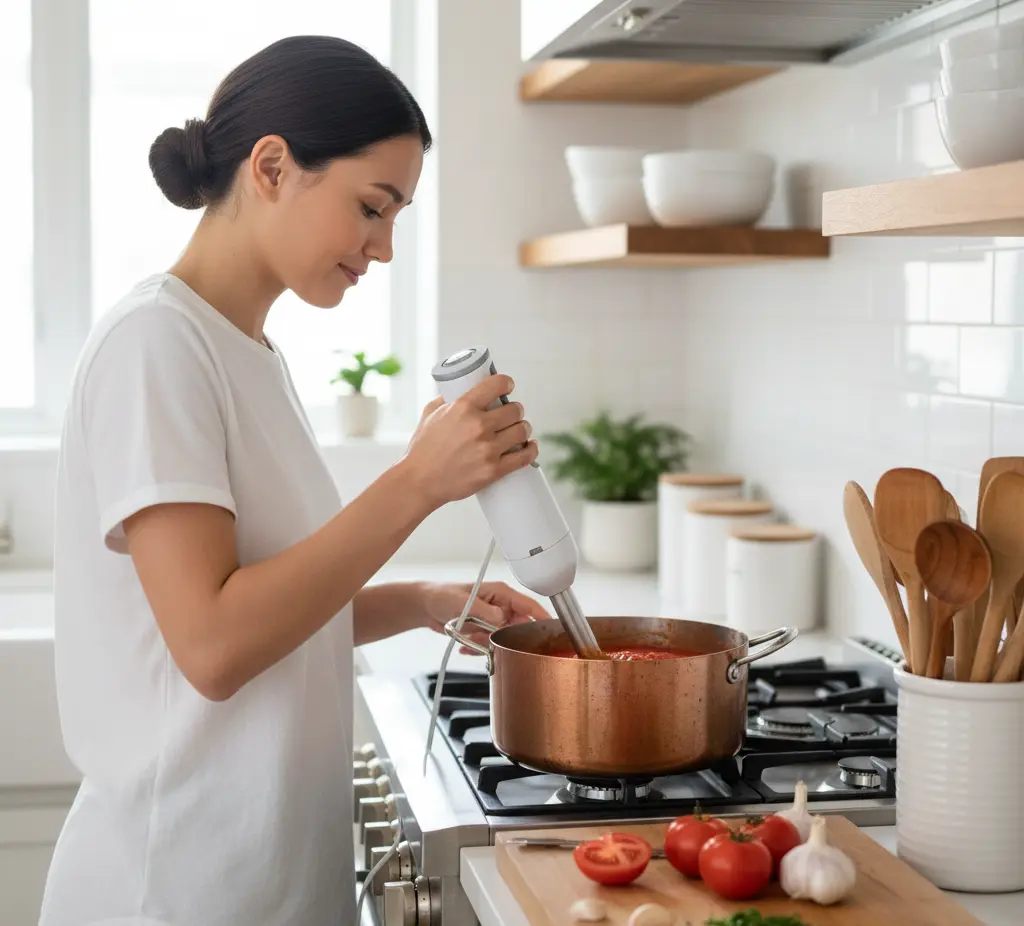
Making Smoothies And Dressings
Immersion blenders can quickly mix smoothies using small jars or cups. They break down fruits and vegetables evenly. Dressings also blend smoothly with minimal effort. The handheld design offers control over texture and consistency. These blenders fit well in tight spaces and small kitchens.
Handling Small-batch Tasks
Hand blenders handle small batches of sauces or dips easily. They work well for whipping cream or beating eggs. The compact size fits small bowls and containers. This makes them ideal for quick, everyday kitchen jobs. Their versatility reduces the need for multiple appliances.
Limitations To Consider
Both hand blenders and immersion blenders offer convenience, but they come with limits. Understanding these limits helps you pick the right tool for your kitchen tasks. Some challenges arise depending on the ingredients and how long you use them. Performance can also vary compared to other types of blenders.
Challenges With Tough Ingredients
Hand blenders struggle with hard or fibrous items. They work well for soft fruits and liquids but slow down with nuts or frozen foods. Some models have attachments for light chopping, yet they cannot handle heavy-duty tasks. This limits their use when preparing thick or dense mixtures.
Ergonomic Concerns
Holding a hand blender steady can tire your hand and wrist quickly. Long blending sessions may cause discomfort or strain. The weight and grip design affect ease of use. Users with weak hands might find these blenders hard to control over time.
Performance Compared To Other Blenders
Immersion blenders do not match the power of countertop blenders. They blend smaller quantities and lack strong motors for tough jobs. For smooth purees or large batches, traditional blenders perform better. Immersion blenders excel at quick blending but fall short in heavy processing.
Comparing With Other Mixers
Mixers come in many types, each with unique uses in the kitchen. Comparing hand blenders and immersion blenders with other mixers helps you pick the right tool. Understanding their differences improves your cooking experience.
Immersion Blender Vs. Hand Mixer
Immersion blenders blend and puree ingredients directly in a pot or bowl. They work well for soups, sauces, and smoothies. Hand mixers whip and beat ingredients, ideal for cake batters and doughs. The hand mixer uses beaters that rotate quickly to add air. Immersion blenders use a blade that spins inside the mixture. Each tool suits different kitchen tasks and food textures.
Attachment Options And Their Uses
Immersion blenders often come with attachments like whisks or choppers. Whisk attachments help whip cream or eggs. Chopper attachments chop vegetables or nuts quickly. Hand mixers usually have beaters and dough hooks. Dough hooks knead bread and pizza dough. These attachments expand the appliances’ functions. Choosing one with useful attachments adds value to your kitchen.
Choosing Based On Cooking Needs
Think about what you cook most to choose the right mixer. For blending hot soups or making smoothies, an immersion blender works best. For baking cakes, cookies, or whipping cream, a hand mixer is better. Some cooks need both for different tasks. Your cooking style and recipes guide your choice. A simple tool that fits your needs makes cooking easier.
Buying Guide For 2025
The buying guide for 2025 helps you choose the right blender for your kitchen. Both hand blenders and immersion blenders blend ingredients directly in pots or bowls. They save time and reduce cleanup. Understanding features, power options, and brands makes shopping easier. This guide covers what to check before buying one.
Features To Look For
Check the motor power for smooth blending. Look for variable speed settings to control texture. A detachable blending arm makes cleaning simple. Safety features like a lock button prevent accidents. Some models include extra tools like whisks or choppers. Choose a blender with comfortable grip for long use.
Corded Vs. Cordless Models
Corded blenders provide constant power for heavy tasks. They suit long cooking sessions without worry. Cordless models offer freedom to move around the kitchen. They are lightweight and easy to store. Battery life varies, so charge often. Think about your kitchen space and usage style.
Popular Brands And Models
Brands like Braun, KitchenAid, and Philips have reliable blenders. Braun Multi quick series offers strong motors and useful attachments. KitchenAid’s hand blenders provide sturdy build and classic design. Philips models combine power with easy cleaning parts. Compare reviews and prices before choosing.
Maintenance And Care Tips
Maintaining your hand or immersion blender ensures it works well for a long time. Proper care prevents damage and keeps performance strong. Small habits can make a big difference in your blender’s lifespan.
Regular cleaning removes food particles and avoids buildup. Correct storage protects the blender from dust and damage. Knowing how to fix common issues saves time and effort.
Cleaning Techniques
Detach the blending arm before cleaning. Wash the detachable part with warm, soapy water. Use a soft brush to clean around the blades carefully. Avoid immersing the motor part in water. Wipe the motor unit with a damp cloth only. Dry all parts completely before reassembling or storing.
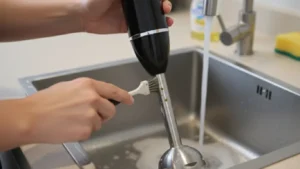
Storage Suggestions
Store the blender in a dry place. Keep it away from heat and moisture. Use the original box or a kitchen drawer. Avoid wrapping the cord tightly around the blender. Let the cord hang loose to prevent damage. Store attachments separately to avoid scratches or breaks.
Troubleshooting Common Issues
If the blender does not start, check the power connection first. Make sure the parts are correctly attached. Overheating may cause the blender to stop working temporarily. Allow it to cool down before use again. If the blades are dull, consider replacing the blade unit. Strange noises may mean food is stuck around the blades. Clean the blades carefully to fix this issue.
Frequently Asked Questions
Is A Hand Blender The Same As An Immersion Blender?
A hand blender and an immersion blender are the same handheld tool. Both blend ingredients directly in pots or bowls for convenience and easy cleanup.
What Are The Disadvantages Of Hand Blenders?
Hand blenders struggle with tough, fibrous, or frozen foods. Holding them steady can cause fatigue during long use. They offer limited chopping ability compared to full blenders.
Is A Corded Hand Blender The Same As An Immersion Blender?
A corded hand blender and an immersion blender are the same device. Both blend ingredients directly in pots or containers.
Which Is Better, Hand Mixer Or Immersion Blender?
An immersion blender excels at pureeing, chopping, and blending soups or smoothies. A hand mixer works best for whipping batters and mixing thicker ingredients. Choose based on your cooking needs for optimal results.
What Is The Difference Between A Hand Blender And Immersion Blender?
They are the same tool; both blend food by immersing the blades directly.
Conclusion: Hand Blender vs Immersion Blender
Choosing between a hand blender and an immersion blender depends on your needs. Both blend ingredients directly in the pot or bowl. They save time and reduce cleanup. Hand blenders work well for soups and smoothies. Immersion blenders often come with extra attachments for chopping or whisking.
Consider how often you cook and what you prepare. This helps pick the right tool for your kitchen. Either way, both make blending easier and faster. Simple, handy, and space-saving options for everyday cooking.

Hi, I’m Joshua Miller, a U.S.-based food lover, review writer, and Co-founder of KitchenWink.com. I hold a Bachelor of Science in Food Science and Culinary Technology, and for over five years I’ve been testing kitchen gadgets like air fryers, blenders, and other cooking tools.
I’m also a home cook, so every product I review is tried in real kitchens—not just in theory. My reviews are based on real results, simple fixes, and tips that anyone can use. With both formal training and hands-on testing, I make sure my advice is clear, honest, and practical.
My goal is simple: to help home cooks choose the right tools and make cooking easier every day.

